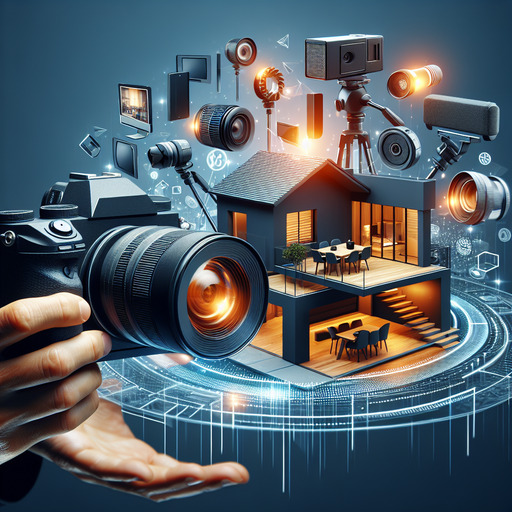
-
Table of Contents
Discover the power of visual storytelling in real estate! Learn which medium, video or photography, can elevate your property listings to new heights. Find out more at Danny Avila.
Introduction
In the competitive world of real estate marketing, the choice between video and photography can significantly impact the effectiveness of property listings. Both mediums offer unique advantages and cater to different aspects of buyer engagement. Real estate videos provide dynamic, immersive experiences that can showcase a property’s layout, ambiance, and neighborhood in a way that static images cannot. On the other hand, high-quality photography captures detailed, high-resolution images that highlight a property’s best features and can be easily shared across various platforms. Understanding the strengths and limitations of each medium is crucial for real estate professionals aiming to attract potential buyers and close deals efficiently. This introduction explores the comparative effectiveness of real estate video versus photography, helping agents and sellers make informed decisions about their marketing strategies.
Real Estate Video vs Photography: Which is More Effective?
In the competitive world of real estate, the presentation of properties can significantly influence potential buyers’ decisions. As technology advances, real estate professionals are increasingly faced with the choice between using video or photography to showcase properties. Both mediums have their unique advantages and limitations, making it essential to understand which is more effective in different contexts.
Photography has long been a staple in real estate marketing. High-quality images can capture the essence of a property, highlighting its best features and creating an immediate visual impact. Photos are easily shareable across various platforms, from online listings to social media, and can be quickly scanned by potential buyers. Moreover, professional photography can enhance a property’s appeal by using techniques such as lighting adjustments, wide-angle lenses, and post-processing edits. This allows for a polished and attractive presentation that can draw in viewers and encourage them to learn more about the property.
However, while photography is undeniably powerful, it has its limitations. Static images can sometimes fail to convey the true scale and flow of a property. For instance, a series of photos might not effectively communicate how rooms connect or the overall layout of the space. This is where video can offer a distinct advantage. Real estate videos provide a dynamic and immersive experience, allowing potential buyers to virtually walk through a property. Videos can capture the ambiance, movement, and spatial relationships within a home, offering a more comprehensive understanding of the property.
Furthermore, videos can incorporate additional elements such as background music, voiceovers, and text overlays to provide context and highlight key features. This multimedia approach can engage viewers on multiple levels, making the property more memorable. Additionally, video content tends to perform well on social media platforms, where algorithms often prioritize video over static images, potentially increasing the reach and visibility of the listing.
Despite these advantages, producing high-quality real estate videos can be more time-consuming and costly compared to photography. It requires specialized equipment, editing skills, and often a longer production timeline. This can be a significant consideration for real estate professionals, especially when working with tight budgets or needing to market multiple properties simultaneously. Moreover, not all potential buyers may have the time or inclination to watch a full video, preferring instead to quickly browse through photos.
In determining which medium is more effective, it is crucial to consider the target audience and the specific property being marketed. For luxury properties or unique homes with intricate details and expansive layouts, video can provide a richer and more engaging experience that highlights the property’s distinctiveness. On the other hand, for standard listings or when speed and cost-efficiency are paramount, high-quality photography may be the more practical choice.
Ultimately, the most effective real estate marketing strategy may involve a combination of both video and photography. By leveraging the strengths of each medium, real estate professionals can create a comprehensive and compelling presentation that appeals to a broader audience. For instance, a listing could feature a video tour to provide an immersive overview, complemented by a gallery of high-resolution photos that allow for detailed examination of specific features. This multifaceted approach can cater to different preferences and increase the likelihood of capturing the interest of potential buyers.
In conclusion, both real estate video and photography have their distinct advantages and can be highly effective in different scenarios. By carefully considering the nature of the property and the preferences of the target audience, real estate professionals can make informed decisions about which medium to use, or how to best combine them, to maximize the impact of their marketing efforts.
Q&A
**Question:** Which is more effective for real estate marketing, video or photography?
**Answer:** Video is generally more effective for real estate marketing as it provides a more immersive experience, showcasing the property’s layout, flow, and features in a dynamic way that photos cannot. However, high-quality photography is still crucial for capturing attention and providing detailed views of specific areas. Combining both can maximize the effectiveness of real estate marketing.